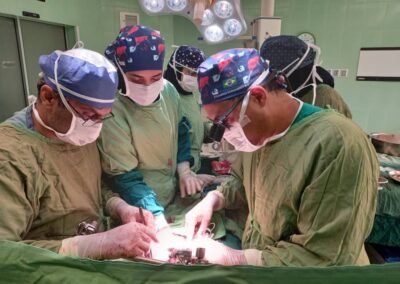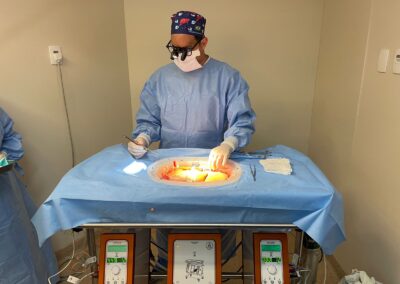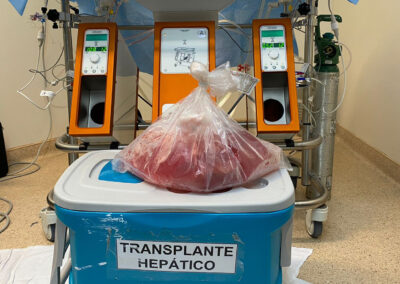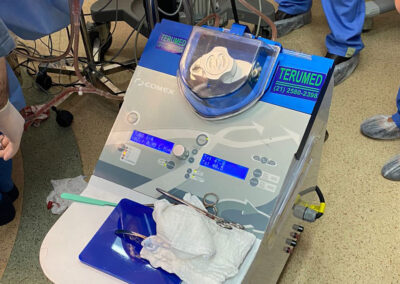Deceased Donor and Living Donor Liver Transplant
WHEN IS THE TRANSPLANT NEEDED?
The treatment of liver cancer has advanced significantly in recent decades. Surgical removal of the tumor and part of the liver is the recommended procedure when the lesion is small and liver function is preserved. When this is not possible, liver transplantation becomes the alternative.
If the tumor is in its early stages and the rest of the liver is not healthy, a liver transplant may be necessary. Liver transplantation can also be an option if the tumor is located in a part of the liver that is difficult to remove surgically.
Deceased Donor or Living Donor
There are two main types of liver transplants: one using the liver from a donor in brain death, and the other using a portion of the liver from a living donor.
In the first case, after obtaining the family’s consent to use the organ, a specialized team removes the liver, which is preserved in special solutions at four degrees Celsius and transported to the hospital where it will be transplanted into the recipient designated by the Department of Health. The procedure involves suturing the major blood vessels that pass through the liver (the vena cava, portal vein, and hepatic artery) and reestablishing the bile flow, which is produced in the liver and released into the intestine.
In the living donor transplant, the donor is a healthy adult from whom a portion of the left or right lobe of the liver is removed.
We have already performed
more than 2,000 liver transplants
Advancements and New Technologies
Procedure
Auxiliary liver transplantation for giant hemangioma.
Liver – Donor
Preparation of the liver for transplantation.
Living Donor
Living donor liver transplantation combined with duodenopancreatectomy for neuroendocrine pancreatic tumor with diffuse hepatic metastases.
DISCOVER OTHER AREAS OF EXPERTISE
GET IN TOUCH
Our team is available to offer the best treatment possible. Click below to contact us and schedule an appointment.




